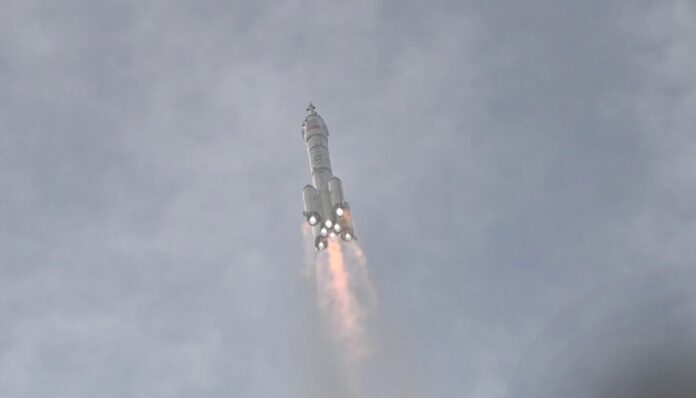| Translate This News In |
|---|
On Tuesday, China successfully launched its latest mission to its Tiangong space station, which included the country’s first civilian astronaut.
It was the latest space milestone for China, which is attempting to catch up with the United States and Russia.
Here’s a look at the Chinese space programme and where it’s going:
Mao’s oath
Soon after the Soviet Union launched Sputnik in 1957, Chinese leader Mao Zedong declared, “We will, too, make satellites.”
After more than a decade, China launched its first satellite aboard a Long March rocket in 1970.
Human space flight took decades longer, with Yang Liwei becoming China’s first “taikonaut” in 2003.
Concerns over the mission’s sustainability forced Beijing to cancel a live television broadcast at the last minute as the launch date approached.
Yang orbited the Earth 14 times in a 21-hour journey.
The space station and ‘Jade Rabbit’
Following in the footsteps of the United States and Russia, China began plans for its own space station in Earth orbit.
The Tiangong-1 lab was established in 2011.
Wang Yaping, the second Chinese woman in space, delivered a video lesson from her craft to youngsters around the country in 2013.
Tiangong-1 was also utilised for medical research and, most crucially, testing to prepare for the construction of a space station.
That was followed in 2013 by the “Jade Rabbit” lunar rover, which appeared to be a flop when it went inert and stopped sending signals back to Earth.
It made a remarkable comeback, eventually monitoring the Moon’s surface for 31 months – much exceeding its predicted lifespan.
The Tiangong-2 orbiting lab was launched by China in 2016. Astronauts that have visited the station have conducted experiments in growing rice and other plants in space.
The “Space dream”
China’s “space dream” has been given high priority under President Xi Jinping.
After years of slowly catching up to their milestones, it wants to overtake both the United States and Russia.
China reiterated this week that its objective to land humans on the Moon by 2030 includes the construction of a facility on the Moon in addition to a space station.
The 2017 failure of the potent Long March-5 Y2 rocket to launch on a mission to place communication satellites into orbit delivered a blow to the lunar goals.
That necessitated the Chang’e-5 launch, which was initially planned to gather Moon samples in the second half of 2017.
In January 2019, the Chang’e-4 robot made history by being the first robot to ever land on the far side of the Moon.
Chang’e-5 made it to the Moon in 2020, flying the Chinese flag there and bringing back the first lunar samples in forty years.
And in 2021, the Tianwen-1 mission’s successful rover landing on Mars’ surface.
In the sky palace
Last year, the last module of the Tiangong space station—whose name translates to “heavenly palace”—joined the main body with success.
The world’s first space-based cold atomic clock system is among the advanced scientific tools it carries, according to state news agency Xinhua.
China’s goal of sustaining a long-term human presence in space will be realised with Tiangong, which is anticipated to stay in low Earth orbit for at least ten years at a height of 400–450 kilometres (250–280 miles).
It will be continuously manned by alternating crews of three astronauts who will conduct research and test new technology.
Following Tuesday’s launch, the Shenzhou-17 mission to Tiangong is anticipated in October.


















